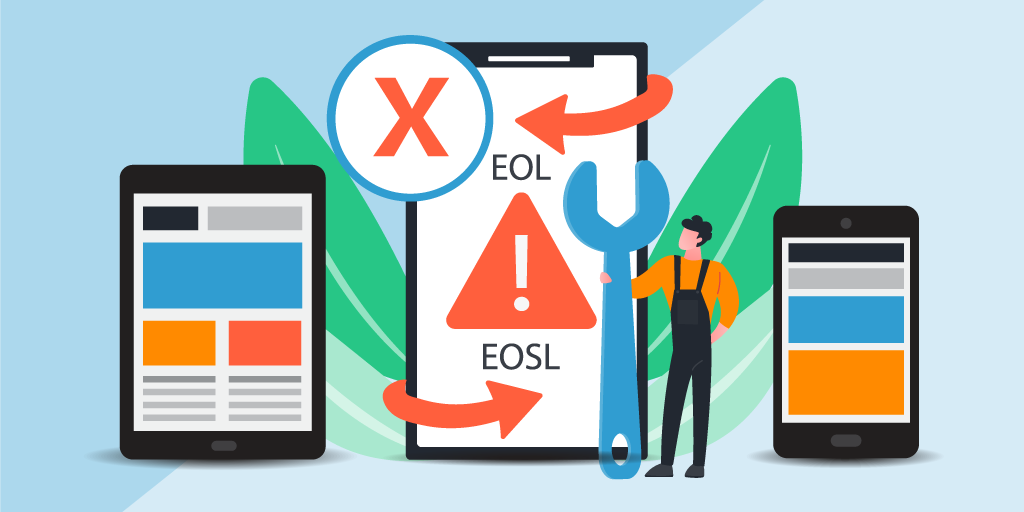Home » Knowledge Base » EOL or EOSL? Mitigate the Impact on Your Stakeholders with Lansweeper’s Device Catalog

Nothing lasts forever – especially your IT assets. When you can no longer receive critical updates and support from the vendor, you run the risk of vulnerabilities opening the door for a security incident or costly downtime.
According to a Ponemon Institute Vulnerability Survey, unpatched vulnerabilities are involved in the majority of data breaches. Take, for example, the WannaCry outbreak, which successfully exploited a vulnerability in an unpatched version of Windows 7, impacting more than 230,000 computers and costing over $4 billion in losses globally. The keyword here is “unpatched.” When products reach End of Life (EOL) or End of Service Life (EOSL), essential updates and patches required to keep hackers out are missing, leaving gaps in your cybersecurity.
In this post, we’ll take a look at the differences between EOL and EOSL, what they mean to your organization, and how Lansweeper Embedded Technologies’’ Device Enrichment Catalog can help you stave off the possibility of outdated devices weakening your stakeholders’ cybersecurity posture.
EOL and EOSL are related, but there are important differences between these two terms.
When an IT device reaches EOL or EOSL, performance problems, software compatibility issues, and security vulnerabilities are common. This leads to lower operational efficiency, potential business disruption due to downtime, and a much higher risk of a security breach.
Maintaining a complete client’s IT asset inventory is a first step toward monitoring the lifecycle of their IT assets. But even a detailed inventory of the IT estate may not provide the context you need to plan ahead for an EOL or EOSL fire drill. It’s important to be aware of what stage of life hardware assets are in at all times, so stakeholders can plan and budget for migrations, implementations, and device disposal effectively, and ensure continued business operations. Failing to monitor EOL and EOSL dates can result in missing critical security patches and updates. If you don’t know that the equipment is no longer supported, you may not even be aware of vulnerabilities until it’s too late.
Even if no security risk exists, aging equipment can decrease productivity, as employees wait for IT to replace their devices. What’s more, the IT department can quickly become bogged down with requests, if a particular device that’s used by many employees reaches EOSL. And, if you don’t know that a wide-scale rip-and-replace is necessary, you may not even have the resources or budget allocated to make it happen. Swapping out hardware at the wrong time – for example, during a new product launch or before a major company event – could have a major impact on revenue.
So how do you keep track of EOL and EOSL dates and details for your rapidly expanding IT estate along with the context you need to make informed decisions? Lansweeper’s Device Catalog, powered by Fing, is the answer. The Device Catalog is an API-based solution that works seamlessly with Lansweeper’s Credential-free Device Recognition (CDR) technology to enrich identified devices with detailed product metadata that would otherwise be undiscoverable, including EOL, EOSL, warranty data, security details, documentation and support, available smart-home integrations and more.
Device Enrichment Catalog is verified and vetted by Lansweeper’s team of experts, and contains more than 263,000 products from over 29,000 brands, as well as over 30,000 operating systems. With a simple scan, you can quickly create a normalized inventory of devices, operating systems and brands, and enrich each category with this detailed information.
The Device Catalog provides consistent and predictable guidelines for support throughout the life of a product to help you manage your IT investments and environments, and plan strategically for future IT investments, migrations and implementations.
Don’t wait until your devices are EOL, EOSL and vulnerable to cyber-attacks and downtime to take action. Check out Lansweeper’s Device Catalog today.